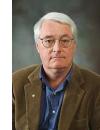
Dr. Spillman received his Ph.D. from Northeastern University in 1977 in experimental solid state physics. The title of his thesis was "Low-Temperature High-Pressure Dielectric Measurements of the Paraelectric-Ferroelectric Phase Transition in the Hydrogen-Bonded Arsenates and their Deuterated Isomorphs." Since that time he worked in industry at the Sperry Corporate Research Center, Geo-Centers, Inc., Hercules Inc. and the Goodrich Corporation prior to joining Virginia Tech as an Associate Professor of Physics and Director of the Virginia Tech Applied Biosciences Center in 1999. He has now retired from Virginia Tech but remains active as a technical consultant to a number of firms and as an expert witness. He has been awarded 44 US and 50 non-US patents and is the author or co-author of more than 170 technical publications, 16 book chapters and edited proceedings, and 2 video short courses. He is a co-editor of the CRC Press Sensors Series of Monographs and has served on the editorial boards of the Journals: Measurement Science & Technology, Optical Engineering, Smart Materials and Structures, Journal of Optics A: Pure and Applied Optics and the International Journal of Optomechatronics. He is a fellow of both the SPIE and the Institute of Physics in the U.K.
This will count as one of your downloads.
You will have access to both the presentation and article (if available).
Wavelength encoding long stroke fiber optic linear position sensor for actuator control applications
This will count as one of your downloads.
You will have access to both the presentation and article (if available).
This video course presents the fundamental principles and practical examples of fiber optic sensors based on polarization and gratings. The mathematical background necessary for understanding polarization and grating effects is developed to the point where it can be utilized for sensor design.
This course covers the theory and operation of the fiber optic sensors based on the Faraday effect in thin films that have been used on gas turbine engines to sense engine speed. These sensors have been in limited production since the late 1980s and represent one of the more successful fiber optic sensors to date.
View contact details
No SPIE Account? Create one


